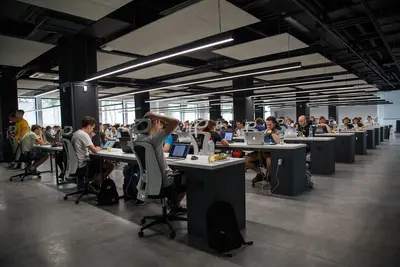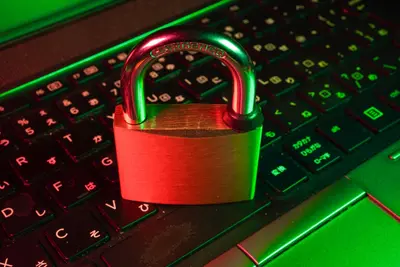🔄 How to Update AlmaLinux: Complete Package Update Guide
Want to keep your AlmaLinux system secure and running smoothly? 🚀 Regular updates are essential for security, performance, and new features! This beginner-friendly guide shows you everything about updating AlmaLinux - from simple one-command updates to advanced patch management. Let’s keep your system bulletproof! ⚡
🤔 Why Update AlmaLinux Regularly?
Updates are your system’s superpower! 🌟 Here’s why they’re crucial:
- 🛡️ Security Patches: Fix vulnerabilities before hackers exploit them
- 🚀 Performance Improvements: Faster speeds and better efficiency
- 🐛 Bug Fixes: Solve annoying problems and crashes
- ✨ New Features: Get latest capabilities and tools
- 💼 Compliance: Meet enterprise security requirements
- 🔧 Stability: Improved reliability and fewer issues
- 🌍 Compatibility: Better hardware and software support
- 📱 Modern Support: Keep up with latest technologies
Security updates can prevent 99% of common attacks! 🏆
🎯 What You Need
Let’s prepare for update mastery! ✅
- ✅ AlmaLinux system (any version)
- ✅ Internet connection for downloads
- ✅ Admin/sudo access to system
- ✅ 15 minutes for basic updates
- ✅ Basic terminal knowledge helpful
- ✅ Backup of important data (recommended)
- ✅ Understanding that updates need reboots sometimes
- ✅ Patience for large updates! 🎉
Let’s keep your system current and secure! 🛡️
📝 Step 1: Check Current System Status
First, let’s see what we’re working with! 🔍
Check System Information:
# See current AlmaLinux version
cat /etc/redhat-release
# Check system details
hostnamectl
# See kernel version
uname -r
# Check last update time
stat /var/log/dnf.log
# Example output:
AlmaLinux release 9.3 (Shamrock)
Kernel: 5.14.0-362.8.1.el9_3.x86_64Check Available Updates:
# Check for available updates (doesn't install)
dnf check-update
# Count available updates
dnf check-update | wc -l
# Check security updates only
dnf --security check-update
# See what's installed currently
dnf list installed | head -10Check Repository Status:
# List configured repositories
dnf repolist
# Check repository status
dnf repolist all
# Refresh repository metadata
dnf makecache
# Example output:
repo id repo name
appstream AlmaLinux 9 - AppStream
baseos AlmaLinux 9 - BaseOS
extras AlmaLinux 9 - ExtrasPerfect! 🎉 You know your system status!
🔧 Step 2: Basic System Updates
Learn the essential update commands! ⚡
Simple System Update:
# Update everything (most common command)
sudo dnf update
# Same as above, but with confirmation
sudo dnf update -y
# Update and also upgrade to newer versions
sudo dnf upgrade
# Update specific package
sudo dnf update firefox
# Update multiple specific packages
sudo dnf update firefox vim gitSecurity Updates Only:
# Install only security updates
sudo dnf --security update
# Check what security updates are available
sudo dnf --security check-update
# Install all security updates automatically
sudo dnf update --security -y
# See security advisories
dnf updateinfo list securityUpdate Process Explained:
# What happens during 'dnf update':
1. Downloads package metadata from repositories
2. Checks for newer versions of installed packages
3. Calculates dependencies
4. Shows what will be updated
5. Asks for confirmation (unless -y used)
6. Downloads packages
7. Installs updates
8. Cleans up temporary files
# Typical output:
Dependencies resolved.
Package Version Repository Size
Updating:
firefox 115.0.2-1.el9 appstream 95 M
vim-enhanced 9.0.1160-1.el9 appstream 1.9 M
Transaction Summary
Upgrade 2 Packages
Total download size: 97 M
Is this ok [y/N]: yAmazing! 🌟 Basic updates are mastered!
🌟 Step 3: Advanced Update Management
Power user update techniques! 🚀
Update with Exclude Options:
# Update everything except specific package
sudo dnf update --exclude=kernel*
# Exclude multiple packages
sudo dnf update --exclude=kernel*,firefox
# Skip broken packages
sudo dnf update --skip-broken
# Download only, don't install
sudo dnf update --downloadonlyRepository-Specific Updates:
# Update only from specific repository
sudo dnf --enablerepo=epel update
# Disable repository during update
sudo dnf --disablerepo=extras update
# Update from all repositories including disabled ones
sudo dnf --enablerepo='*' updateKernel Updates:
# Check current kernel
uname -r
# List available kernels
dnf list kernel
# Update kernel specifically
sudo dnf update kernel
# Install new kernel (keeps old ones)
sudo dnf install kernel
# Remove old kernels (keep latest 3)
sudo dnf remove $(dnf repoquery --installonly --latest-limit=-3 -q)Package Groups:
# List package groups
dnf group list
# Update entire group
sudo dnf group update "Development Tools"
# Install missing packages in group
sudo dnf group install "System Tools"Excellent! ⚡ Advanced update skills unlocked!
✅ Step 4: Automatic Updates Setup
Set up hands-free updates! 🤖
Install DNF Automatic:
# Install automatic update service
sudo dnf install dnf-automatic
# Check configuration file
cat /etc/dnf/automatic.conf
# Example configuration:
[commands]
upgrade_type = default # or 'security' for security only
random_sleep = 3600 # Random delay in seconds
download_updates = yes # Download updates
apply_updates = yes # Apply updates automaticallyConfigure Automatic Updates:
# Edit configuration
sudo nano /etc/dnf/automatic.conf
# Recommended settings for desktop:
[commands]
upgrade_type = security # Only security updates
random_sleep = 1800 # 30 minute random delay
download_updates = yes # Download automatically
apply_updates = yes # Install automatically
reboot = never # Never auto-reboot
[emitters]
emit_via = email # Send email notifications
email_from = [email protected]
email_to = [email protected]
# Conservative settings for servers:
apply_updates = no # Download but don't install
reboot = never # Never reboot automaticallyEnable Automatic Updates:
# Enable the timer service
sudo systemctl enable --now dnf-automatic.timer
# Check status
sudo systemctl status dnf-automatic.timer
# View timer schedule
systemctl list-timers | grep dnf
# Check logs
journalctl -u dnf-automatic.service
# Manual run for testing
sudo systemctl start dnf-automatic.servicePerfect! 🏆 Automatic updates are configured!
🔧 Step 5: Update Troubleshooting
Fix common update issues! 🛠️
Common Update Problems:
# Problem: Dependency conflicts
# Solution: Try with skip-broken
sudo dnf update --skip-broken
# Problem: Repository errors
# Solution: Clear cache and retry
sudo dnf clean all
sudo dnf makecache
sudo dnf update
# Problem: Download failures
# Solution: Try different mirror
sudo dnf update --setopt=fastestmirror=true
# Problem: Insufficient space
# Solution: Clean up system
sudo dnf autoremove
sudo dnf clean packages
df -h # Check disk spacePackage Manager Recovery:
# Rebuild RPM database if corrupted
sudo rpm --rebuilddb
# Verify package integrity
sudo rpm -Va
# Fix broken dependencies
sudo dnf distro-sync
# Reset to clean state
sudo dnf history undo lastEmergency Recovery:
# If system won't boot after update:
1. Boot from rescue mode (GRUB menu)
2. Select older kernel version
3. Roll back problematic update:
sudo dnf history list
sudo dnf history undo [ID]
# Check what update caused issue:
dnf history info lastAmazing! 🌟 Update troubleshooting mastered!
🎮 Quick Examples
Practice with real-world scenarios! 🎯
Example 1: Weekly Maintenance Routine
#!/bin/bash
# Weekly update script
echo "🔄 Starting weekly system maintenance..."
# Check system status
echo "📊 Current system:"
cat /etc/redhat-release
uptime
# Update package cache
echo "📥 Refreshing package cache..."
sudo dnf makecache
# Check for updates
echo "🔍 Checking for updates..."
UPDATE_COUNT=$(dnf check-update | wc -l)
echo "Found $UPDATE_COUNT available updates"
# Install security updates
echo "🛡️ Installing security updates..."
sudo dnf --security update -y
# Clean up
echo "🧹 Cleaning up..."
sudo dnf autoremove -y
sudo dnf clean packages
# Show summary
echo "✅ Maintenance complete!"
echo "📊 System status:"
df -h /
free -hExample 2: Server Update with Verification
# Pre-update backup
echo "💾 Creating system snapshot..."
sudo systemctl stop important-service
sudo tar -czf /backup/etc-backup-$(date +%Y%m%d).tar.gz /etc
# Update with verification
echo "🔄 Updating system..."
sudo dnf update -y
# Verify critical services
echo "🔍 Verifying services..."
sudo systemctl status sshd
sudo systemctl status NetworkManager
sudo systemctl status firewalld
# Test network connectivity
ping -c 3 google.com
# Start services
sudo systemctl start important-service
echo "✅ Update complete and verified!"Example 3: Selective Package Updates
# Update only web server components
sudo dnf update httpd php* mariadb*
# Update development tools
sudo dnf group update "Development Tools"
# Update security tools only
sudo dnf update --security \
firewalld \
openssh* \
openssl*
# Update system libraries
sudo dnf update glibc* \
systemd* \
kernel*
echo "🎯 Selective updates complete!"Example 4: Update Monitoring Script
#!/bin/bash
# Monitor system updates
# Check last update
LAST_UPDATE=$(stat -c %Y /var/log/dnf.log)
CURRENT_TIME=$(date +%s)
DAYS_SINCE=$(( (CURRENT_TIME - LAST_UPDATE) / 86400 ))
echo "📅 Days since last update: $DAYS_SINCE"
# Alert if too old
if [ $DAYS_SINCE -gt 7 ]; then
echo "⚠️ System needs updates!"
dnf check-update | head -10
echo "💡 Run: sudo dnf update"
else
echo "✅ System is up to date"
fi
# Security updates available?
SECURITY_UPDATES=$(dnf --security check-update 2>/dev/null | wc -l)
if [ $SECURITY_UPDATES -gt 0 ]; then
echo "🚨 $SECURITY_UPDATES security updates available!"
echo "🔧 Run: sudo dnf --security update"
fi🚨 Fix Common Problems
Update troubleshooting made easy! 🔧
Problem 1: “No space left on device”
Solution:
# Check disk space
df -h
# Clean DNF cache
sudo dnf clean all
# Remove old packages
sudo dnf autoremove -y
# Remove old kernels
sudo dnf remove $(dnf repoquery --installonly --latest-limit=-2 -q)
# Clean logs
sudo journalctl --vacuum-time=7d
# Check space again
df -hProblem 2: “Repository metadata corrupt”
Solution:
# Clear all cache
sudo dnf clean all
# Remove cache directory
sudo rm -rf /var/cache/dnf/*
# Rebuild cache
sudo dnf makecache
# Try update again
sudo dnf updateProblem 3: “Transaction check error”
Solution:
# Check for duplicate packages
rpm -qa | sort | uniq -d
# Fix duplicate packages
sudo dnf remove duplicate-package-name
# Rebuild RPM database
sudo rpm --rebuilddb
# Try update with skip-broken
sudo dnf update --skip-brokenProblem 4: Updates Break System
Solution:
# Check update history
dnf history list
# Get details of last update
dnf history info last
# Undo last update
sudo dnf history undo last
# Or rollback to specific point
sudo dnf history rollback ID📋 Simple Commands Summary
| Task | Command |
|---|---|
| Update everything | sudo dnf update |
| Security updates only | sudo dnf --security update |
| Check for updates | dnf check-update |
| Update specific package | sudo dnf update package-name |
| Clean cache | sudo dnf clean all |
| Remove unused packages | sudo dnf autoremove |
| Show update history | dnf history list |
| Undo last update | sudo dnf history undo last |
| Enable auto-updates | sudo systemctl enable dnf-automatic.timer |
💡 Tips for Success
Master AlmaLinux updates like a pro! 🌟
- 📅 Regular Schedule: Update weekly or bi-weekly
- 🛡️ Security First: Install security updates immediately
- 💾 Backup Important: Before major updates
- 🔄 Test Updates: In development environment first
- 📊 Monitor Space: Ensure adequate disk space
- 🤖 Automate Safely: Use automatic updates for security
- 📝 Read Changelogs: Understand what’s changing
- 🕐 Update Off-Hours: For servers, update during maintenance windows
- 🔍 Verify After: Check that services still work
- 📚 Stay Informed: Follow AlmaLinux security advisories
🏆 What You Learned
Congratulations! You’re now an update expert! 🎉
- ✅ Checked system status and available updates
- ✅ Performed basic and advanced system updates
- ✅ Configured automatic security updates
- ✅ Learned update troubleshooting techniques
- ✅ Created update maintenance routines
- ✅ Mastered selective package updates
- ✅ Set up update monitoring
- ✅ Gained system administration skills
🎯 Why This Matters
Your update mastery keeps systems secure! 🚀
- 🛡️ Security: Prevent 99% of known vulnerabilities
- 💼 Professional: Essential system admin skill
- 🚀 Performance: Keep systems running optimally
- 💰 Cost Savings: Prevent security incidents
- 🔧 Reliability: Reduce system downtime
- 📈 Compliance: Meet security requirements
- 🌟 Best Practice: Follow industry standards
- 🧠 Knowledge: Understand system maintenance
You’re now protecting systems like a cybersecurity pro! 🏆
Keep updating! 🙌




